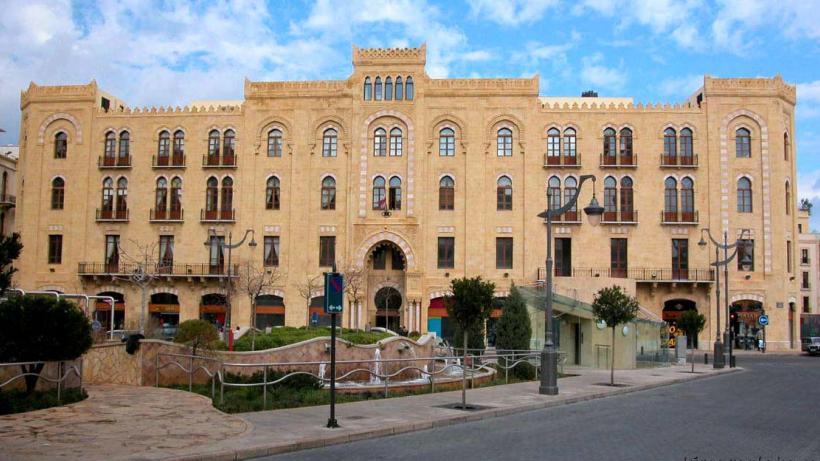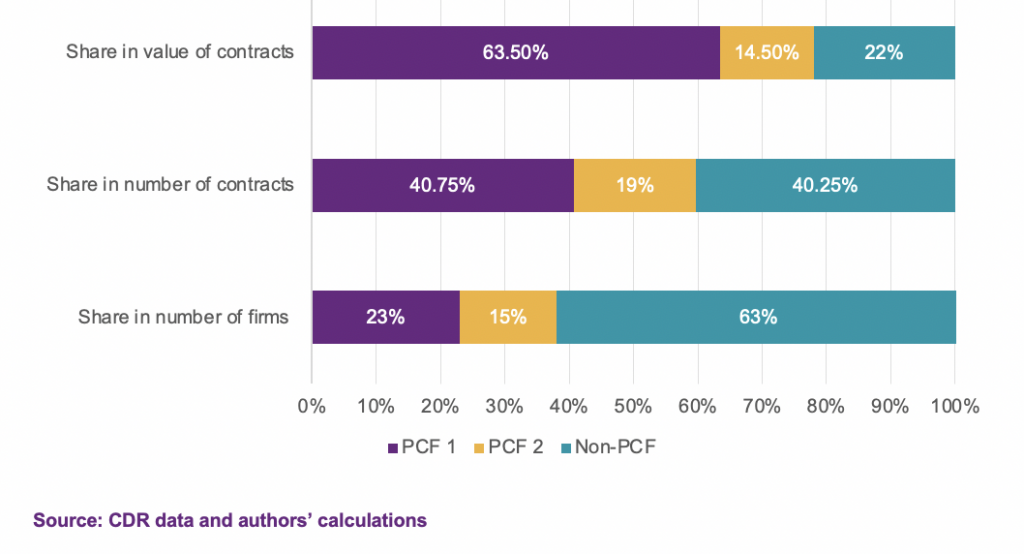
The value of a ‘seat at the table’: Elite interference in Lebanon’s public procurement
Elites in weak bureaucracies have ample incentives to interfere in public procurement. New research from Lebanon shows how billions of dollars in foreign infrastructure funding are more likely to be contracted to firms that are politically well-connected. To improve public infrastructure procurement, greater accountability from elites is needed.
The explosion at Beirut’s port on 4 August 2020 left large parts of Lebanon’s capital in ruins, while the country’s already dilapidated public infrastructure is in dire need of large-scale investment. For Lebanon’s recovery from its present-day overlapping crises, efficient and reliable public procurement is a prerequisite. As in other countries with weak bureaucracies, however, interference by elites in public procurement undermines the effectiveness of international development assistance that is designed to fund these investments and improve the workings of public procurement institutions.
Elites in weak bureaucracies have ample incentives to interfere in public infrastructure institutions. On average, public procurement amounts to a sizeable 13.6% of GDP in upper-middle income countries. Even in mature democracies with strong institutions, previous research shows that interference by elites in public procurement is a significant challenge. Particularly when natural resources are absent, large infrastructure projects can provide a reliable source of rents for elites.
Public infrastructure procurement in Lebanon
Lebanon’s Council for Development and Reconstruction (CDR) offers a suitable example of how elites influence procurement processes. Endowed with special prerogatives and practically exempted from accountability institutions to manage the reconstruction after the country’s civil war (1975-1990), the CDR was designed as an ‘island of efficiency’ to implement infrastructure projects with foreign funding in an institutional environment that was anything but efficient. CDR oversaw the implementation of virtually all major infrastructure projects with foreign funding, from irrigation to solid waste to highway bridges. In the decade between 2008 to 2018, CDR handled projects to the tune of US$3.98 billion, of which some US$1.76 billion came from foreign donors.
In effect, CDR not only became a profitable source of rents for a small economy with powerful and well-connected elites. The institution came to reflect the very way in which Lebanon’s power-sharing arrangement functions.
Evidence from a new dataset
In a new paper, we analysed all 383 contracts awarded by CDR between 2008 and 2018. We identified whether winning firms were politically connected and whether these politically connected firms (PCF) were subsequently more likely to receive larger contracts. Knowing that political connections can take many forms, we also examined the ‘quality’ of firms’ political connections. We differentiate whether a firm is either related to the small circle of political elites with direct connections to the board of CDR (called ‘PCF1’) or to the wider set of powerful political elites in the country, including members of parliament and ministers (called ‘PCF2’). Differentiating between these qualities of political connections provides not only a more accurate mapping of political realities in Lebanon, but also allows for inferences into how elites share economic resources.
Our results show that PCFs capture the majority of CDR project funding. A total of 135 firms applied for these contracts, 31 (or 23%) of which were politically connected to a board member of CDR or their protégés (PCF1); 20 (or 15%) were connected the wider set of elites or to a politician in office during that period (PCF2), while 84 (or 63%) were not connected (Figure 1). Although constituting less than a quarter of firms, PCF1 firms won more than 40% of contracts and captured 63.5% of the total value.
Figure 1: Share of firms, contracts, and contract values by firm type, 2008-2018.

Connections to elites with a ‘seat at the table’ gives larger contracts
Firms with connections to elites that were able to secure a ‘seat at the table’ at the board of CDR, that is, PCF1 firms, received a larger share of total contract value. We show that this result does not emanate from any firm characteristics and that PCF1 contracts are significantly larger than the average for other firms. These contracts are even larger during election years, which strongly suggests a clientelist exchange between elites and connected firms. We argue that it is elite-level influence, rather than the superior skills of firm owners and managers, that drives this result.
Other connected PCF2 firms, by contrast, received contracts as large as non-connected firms. We argue that these results indicate that even powerful elites constrain their capacity to influence the allocation of projects and adhere to strong norms of power sharing behavior. Elites form and maintain complex cartel-like networks that support the exchange of information to ensure that the ‘right’ firm wins.
To fund public infrastructure, accountability must come first
In power sharing arrangements, particularly in countries with weak bureaucracies, such as many post-conflict states, the design of valuable public institutions is not left to chance. These institutions come to life to solve a problem of resource allocation. Norms of power-sharing behaviour ensure their longevity. Lebanon’s CDR serves as an illustrative example.
In a context such as the Lebanese, capacity building via international donors or even technical interventions—such as improving regulations—might be both a necessary condition for improvement and desirable on normative grounds. Yet, they are unlikely to yield results that justify the extensive use of development assistance in the absence of reforms that enhance the accountability of powerful elites. Alternative strategies may prove more promising to achieve a change in social norms that directly or indirectly legitimise collusive and corrupt behaviour.
Disclaimer: The views expressed in this post are those of the authors based on their experience and on prior research and do not necessarily reflect the views of the IGC.

